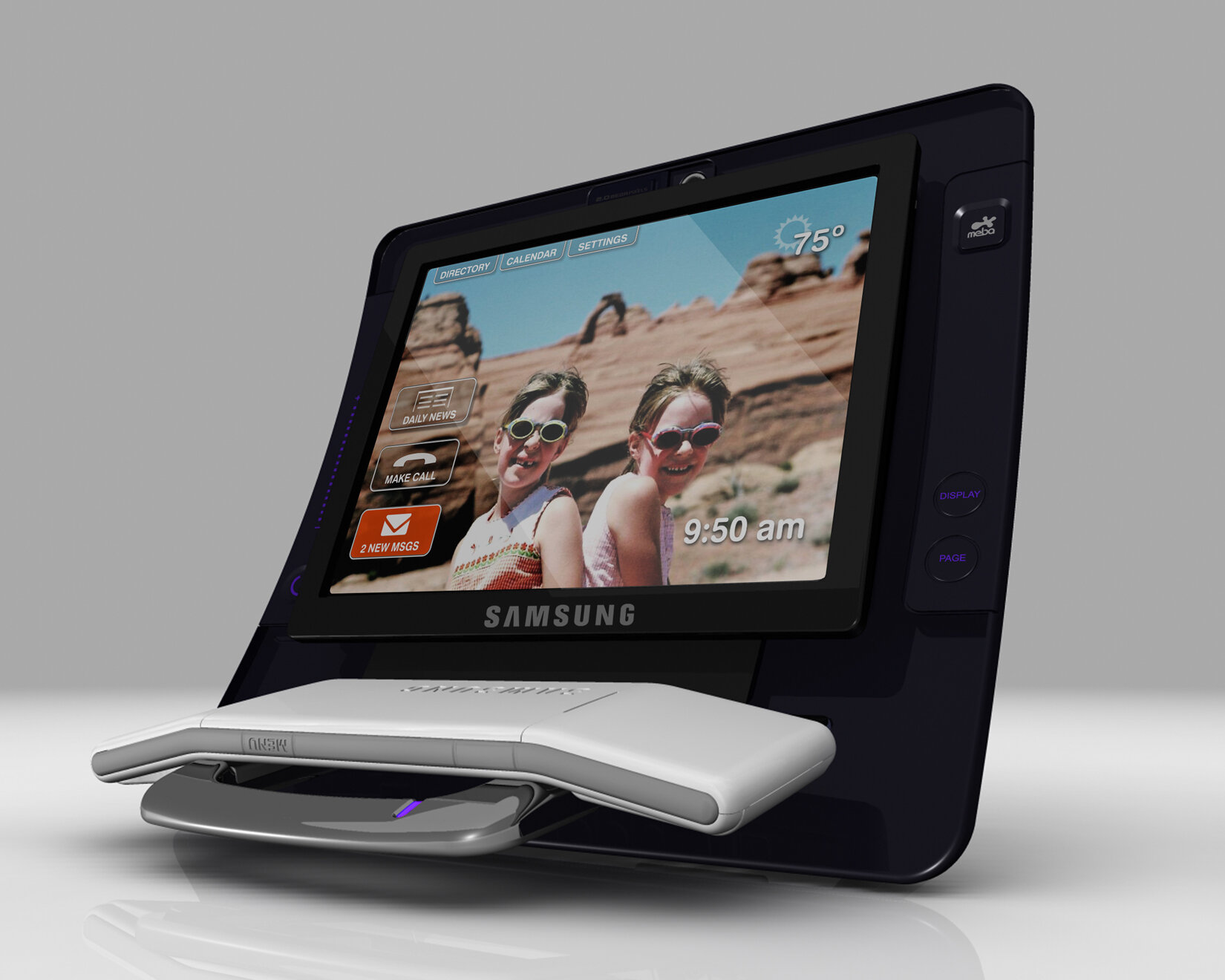Samsung
Networked Home
Before the iPhone and ubiquitous touchscreen interfaces became widely adopted, I worked at Samsung Design Lab, a multidisciplinary advanced technology team that innovated the product lineup and brand perception in the US market. A year-long series of iterations on mobile handsets inspired a deeper examination of the entire mobile ecosystem and emerged the networked home. This proof of concept was initially intended to enable hands-free charging of a mobile handset while working at a desk, countertop, or any stationary workspace and evolved into something intentionally designed for engagement. The video-conferencing capability was ahead of its time in the US market, carriers were optimizing for margins over the arrangement, and despite the practical applications of this utility, this product was not released in the US. A unique feature of this device was the early adoption of inductive charging, which triggered wifi mode to radically reduce the telecom roaming fees at the time, which was the most significant barrier to entry for mobile phone adoption. This device was eventually developed in South Korea and became a standard issue device in luxury high-rises in metropolitan areas.
VC Station
DVRs were a critical inflection point as the interim technology for content on demand. This solution was intended as a method for storage; however, through the iterative process, we discovered that we knew very little about the audience in delivering a black box. As we iterated, we wanted to find methods for capturing critical data on usage and behavior while providing an access point for the entire networked solutions. Ultimately, we wanted to eliminate the need for an array of devices from multiple carriers. This base station was a step towards consolidation before open APIs and streaming media technology. This was another product that US carriers would not allow as it competed with their proprietary solutions.
Base Station + Set Top Box
Eventually, we realized that the set-top box could be manufactured within the TV, and Samsung manufactured the first smart TV, which required an intelligent remote. This unique remote enabled users to navigate across all networked devices along with the software for traversing media channels. The remote featured the first sliding form factor. With a thumb flick, users could slide the device open to reveal handles for invoking conferencing mode. This was well before Cisco, Zoom, and all the things that dominate conferencing today.
Wireless Security + Conferencing Camera
A networked home required cameras and, of course, a beautifully designed one. Our goal was to arrive at a portable solution that could be adapted to any environment. This camera was the first WiFi-enabled remote solution for security and conferencing.
Additionally, we imagined how the tech solutions could be manufactured for different tiers and operate as stand-alone that did not require the entire suite of products. This screw-in (a.k.a. mass entry product) security camera and flood lamp was a hybrid device that connected over wifi and did not require any services to work. This seemingly innocuous product was a contentious topic as carriers wanted more technology bundled with it.






